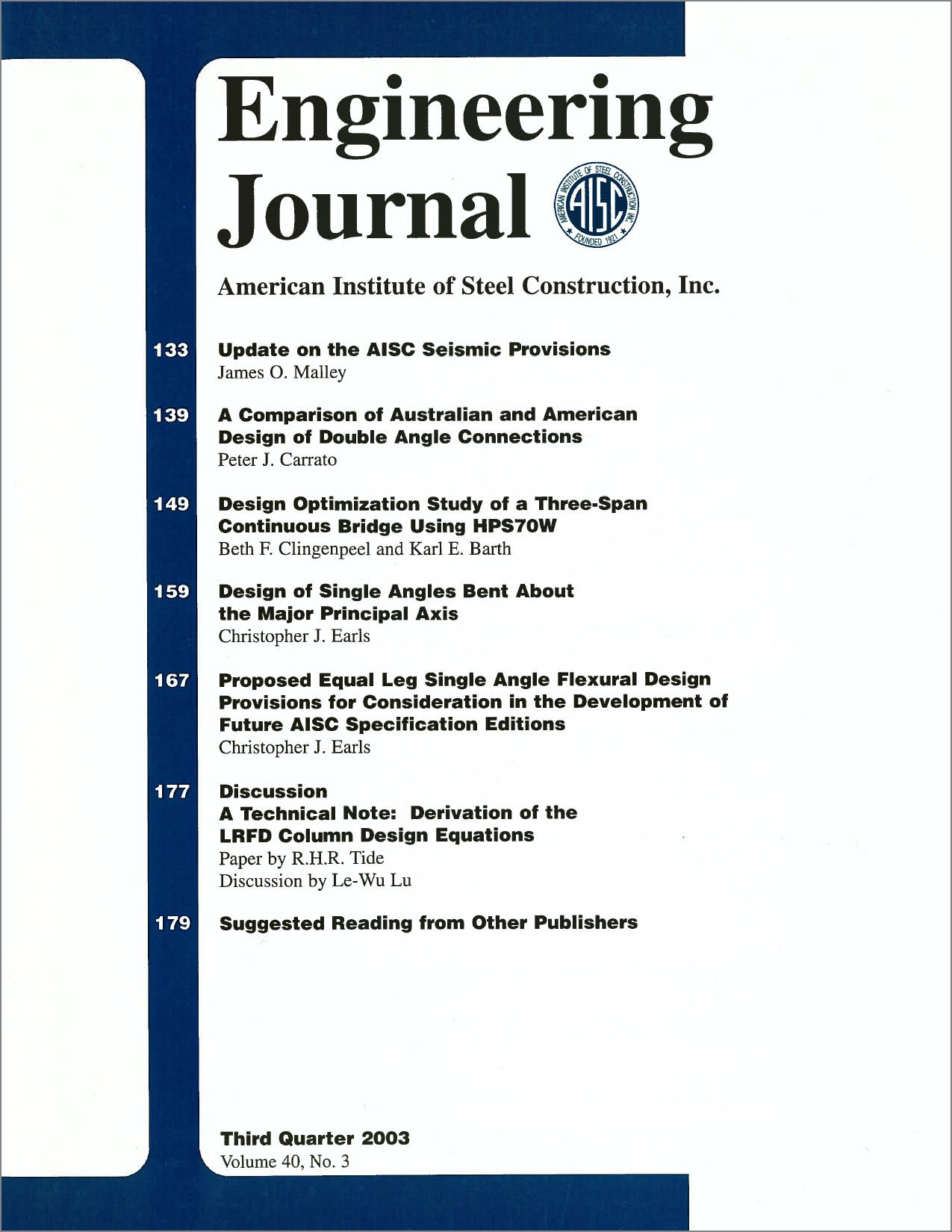Design Optimization Study of a Three-Span Continuous Bridge Using HPS70W
DOI:
https://doi.org/10.62913/engj.v40i3.809Abstract
Since its introduction to the bridge market in 1996, High Performance Steel (HPS) has been successfully implemented in a wide range of bridge projects by several state transportation departments. Examples of which include the Snyder South Bridge in Nebraska that was initially designed using AASHTO M270 Grade 50 weathering steel. The Nebraska Department of Roads opted to use HPS70W in place of the Grade 50 weathering steel without performing any redesign. This was done to provide information on welding and fabrication issues with HPS70W (Wasserman, Azizinamini, Pate and Greer, 1998). Also, in 1996, the Tennessee Department of Transportation (TDOT) partnered with FHWA through the Innovative Bridge Research and Construction Program to use HPS70W in a bridge project. The TDOT was in the process of designing a two-span continuous bridge, with span lengths of 236 ft 6 in., located on Tennessee State Route 53 over Martin Creek (FHWA, 1998). The bridge has a roadway width of 28 ft on three I-girders spaced at 10-ft 6-in. The superstructure was redesigned utilizing HPS70W for the girders and Grade 50W steel for the stiffeners, cross-frames, and other miscellaneous steel. The designs were performed using the 1994 AASHTO LRFD Bridge Design Specifications. These bridges are reported to have cost savings on the order of 10 percent through the inclusion of HPS70W in their superstructures. This paper presents a cost analysis of a fixed three-span bridge incorporating various material and girder configurations. An optimized parametric design study was conducted by varying key superstructure design variables. Girders are optimized in this study based on least weight for a fixed span-to-depth ratio.

